dans le jardin
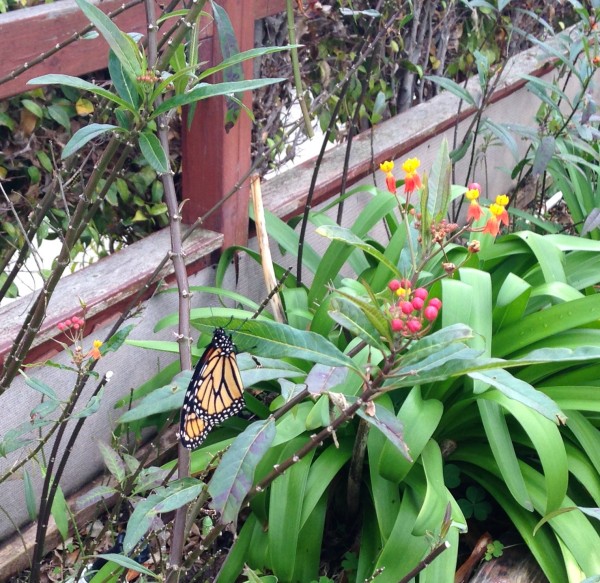
Today I’m sharing a neighbor’s garden that I hope will inspire you. He has cultivated a Monarch Butterfly habitat, to help combat the dwindling populations of monarchs due to pollution and reduction in their natural food supply, mainly milkweed. I try to pass by on my dog-walking route periodically to see where the Monarchs are in their life cycle. This group won’t migrate…only the Monarchs that hatch in late summer and early fall will fly south.
If you live in a region where Monarch butterflies are native, it’s very simple to attract them: just plant milkweed. It’s not a pretty plant, especially after those caterpillars have been chowing down, but requires little maintenance aside from cutting back to the ground periodically to encourage new growth. I’m hoping to “refresh” of some of our front yard plantings this spring, and will figure out how to add some milkweed to the mix.
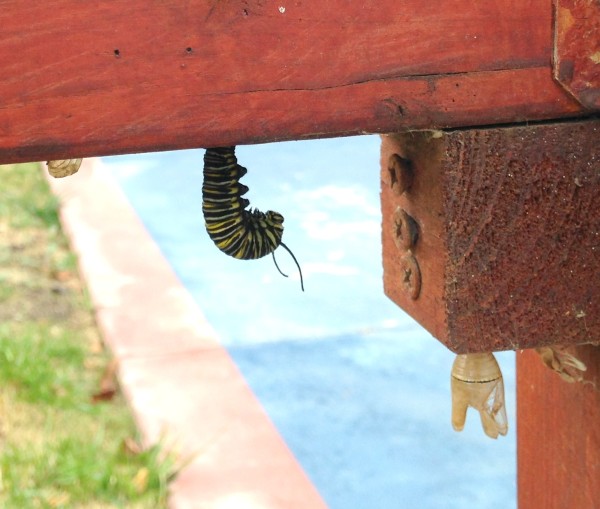
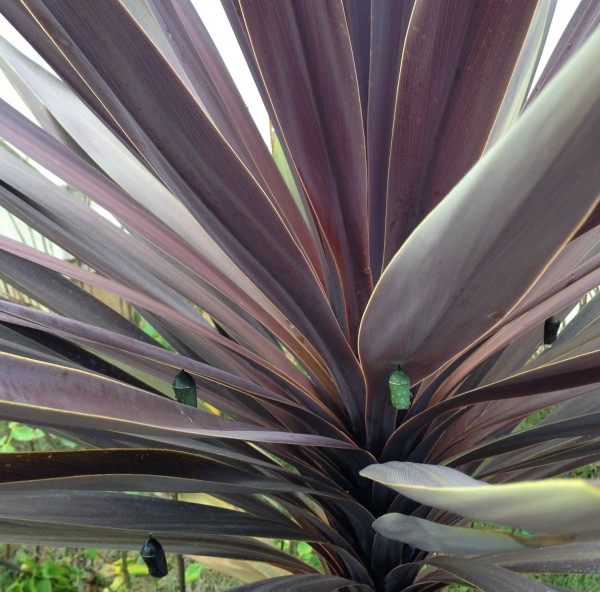
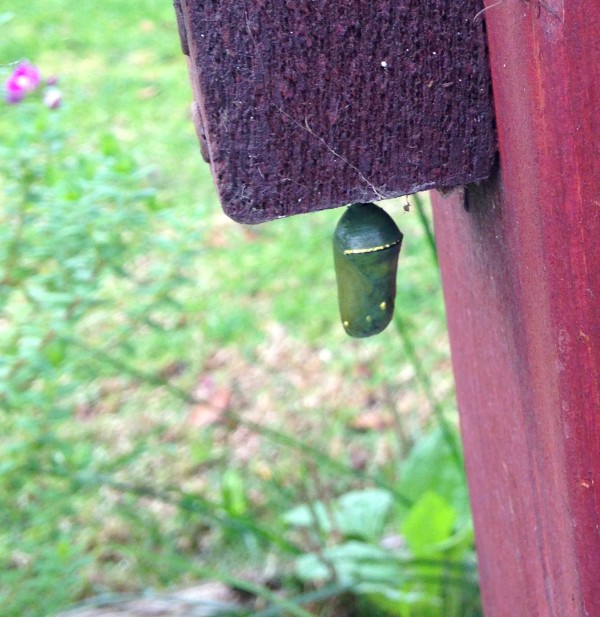
Do you have Monarch butterflies where you live? Are there any other native habitats that you’ve encouraged in your garden?
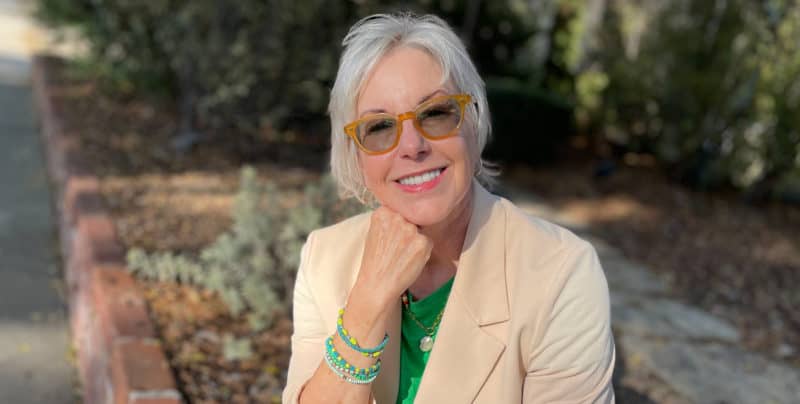
Stay in touch
Sign up to be notified of new posts and updates from une femme d’un certain âge.

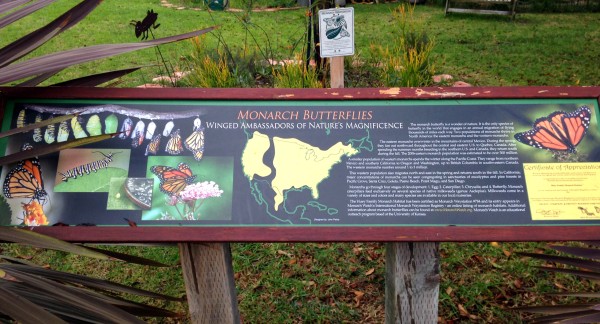

What a contribution your neighbour’s garden makes, Sue, and thanks so much for sharing the inspiration.
We actually have a time when they are abundant while migrating south. They are so beautiful. Love the pupa pictures.
Yes! In my side yard, which is currently a wilderness of weeds, I’ve decided to sow seeds and experiment and do what I can for pollinators and at-risk natives. <3
Wow! So cool. There are a few natural habitats near me that nurture butterflies but I’ve never heard of a private person doing it. Great work.
I understand that there is milkweed, and milkweed – and that planting the tropical kind in the wrong place can confuse the butterflies into laying their eggs at the wrong time, or some such thing. So I checked with my nursery that the kind I got is native to my area.
We do, but as they say, everything is bigger in America. Ours are much smaller.
Yes, we do have Monarch butterflies in Dallas and we should certainly plant some milkweed. I’ll research the best time to plant. I’m sure we have them at our farm as well and I will do the same there. These butterflies did enjoy our Salvia Leucantha in the late summer/early fall.
We planted three milkweeds in a kind of unobtrusive place in our yard last Spring. (Truly, they are not very attractive plants). I never saw any caterpillars or pupae, but we did have monarchs zipping around the yard all summer, so we must have done something right! I take the doggy out every morning, and I like to sit & watch the butterflies while the dog chooses just the perfect spot to pee.
Bravo for including this in your blog. I’m a Master Gardener and part of our mission is to encourage everyone to support our native habitat. Nothing is more important to our world and food supply than insect habitat. Something everyone can do – all you need is space for an outdoor plant. And very importantly, make sure you don’t use or purchase plants that have been treated with neonicotinoids, systemic pesticides that can take out an entire pollinator hive throughout the life of the plant. You need to ask when and where you purchase.
I don’t have much land, but you have inspired me to find some milkweed to plant in my tiny from planter 🙂
After reading your post, I wanted to find out more about the Monarchs & came across this article (http://os.care2.com/all/why-planting-milkweed-is-actually-hurting-monarch-butterflies#1), which people might want to check out before running out to buy Milkweed for their gardens. Where I live (Denman Island in B.C.), we have one of the last areas in the world where the Checkerspot Butterfly is found. Our local Conservancy has a program in place to breed more & replenish the dwindling population which has been quite successful. So great that where man has created these problems for nature, some also try to come up with solutions to mitigate their harm.
Thanks for letting us know! I’ll check with the local nursery where my neighbor gets his milkweed.
I’m A huge fan of unfemme and also a scientist on the federal team working to save monarchs. Thank you, thank you for publishing this!!! Chris and Marsha are right, the tropical milkweed is actually detrimental, so make sure to find a native species. To further complicate matters, some nurseries coat their plants, even the native plants, with insecticides. The Make Way for Monarchs, Xerces Society, and Journey North websites have information on reputable seed sources and nurseries. I’m heading off to work with a spring in my step knowing that so many fashionable women are on board with helping to save such an iconic species!!
I teach my students that there is a difference between pupa, chrysalis and cocoon. The pupa is the stage between the larva and adult stages. The chrysalis is a butterfly pupa. A cocoon is a silk case that moths, and sometimes other insects, spin around the pupa. Monarchs tend to leave their food source plant when they are ready to pupate. A fellow teacher and her class were able to keep 15 monarch caterpillars through their entire life cycle including seeing them move into their pupal stage and then watching the a butterfly emerge from its chrysalis before their eyes. Magical. We used milkweed that was growing naturally in our Burbank (LA) California backyards.
burt514, thanks so much! I always get confused on the terms for the different stages. How great for the students to be able to experience the life cycle up close.
Thank you!
No worries, you aren’t the only one. Just some fun trivia.
Ahh…we only have Monarchs here in October, passing through on their way to warmer climates. Our home lies within a ‘flight path’, and I keep milkweed planted in my garden. Some years, we’ll go out in the morning and find gajillions of them ‘resting’ before taking off on their way.
Angela, that must be such a wonderful thing to see!